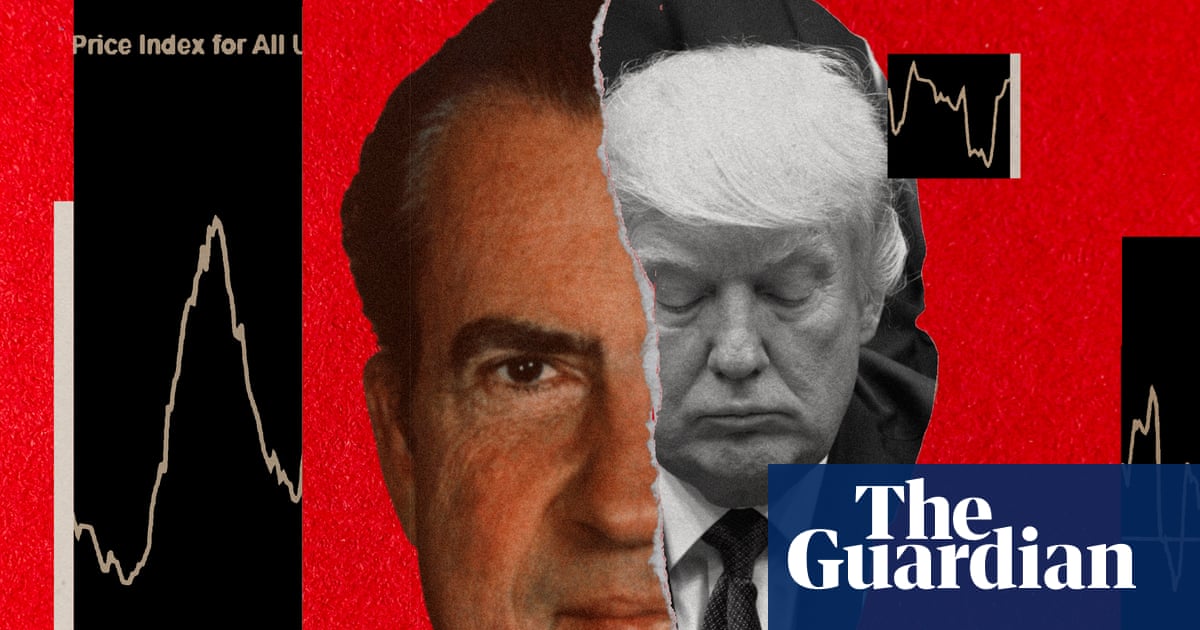One of the more critical lessons economists gleaned from the Nixon administration is about the exorbitant cost of allowing politicians to mess with the Federal Reserve. Donald Trump also learned an important lesson from Richard Nixon – a very different one.
Nixon had blamed the Fed for his loss in his first bid for the presidency in 1960. By keeping rates high, he believed, it caused a recession that led voters to punish the then vice-president. In 1972, he would not let that happen again.
Staring at likely losses in the midterm elections next year, Trump is turning to Tricky Dick’s playbook to try to ensure a Maga Congress at least for the rest of his presidency by pushing interest rates down as far as he can.
History shows us the likely impact. Under Nixon, the Fed repeatedly pulled back its disinflationary policies, pressured by the president and Congress to let the economy run hot. By 1974, inflation had risen above 12%. Bringing it back under 5% took another eight years.
It may seem crazy for Trump to strong-arm the Fed at this stage, when the economy seems to be surprisingly solid and the stock market keeps toying with new highs. Most voters disapprove of Trump’s performance on the economy. But the economic maelstrom threatened by the president’s capricious policymaking–including his tariff hikes, migrant raids and a vast tax cut that will add trillions to the federal debt–has not materialized.
There are signs of economic weakness on the horizon. With the exception of IT equipment and software, business investment has been declining in recent quarters. Still, the US economy grew 3.8% in the second quarter, the fastest pace in two years. Sluggish job creation in recent months is mostly due not to a weak economy but to a shortfall in the labor supply, caused by Trump’s crackdown on the foreign-born, which amounts to one in five workers.
Moreover, the once-feared surge in inflation has been slow to arrive, suggesting to economists that while the barrage of tariffs Trump imposed on goods from around the world will raise prices, it may not seriously change people’s expectations and lead to persistent inflation.
On the other hand, trying to take over the Federal Reserve carries real risks for the president. Financial markets are unlikely to be pleased if the Supreme Court eventually allows him to replace Fed governor Lisa Cook with another crony to side with his chief economic advisor Stephen Miran, newly appointed to the board of governors. And markets are unlikely to react calmly if Trump somehow manages to oust Fed chairman Jerome Powell before his term ends next year.
Trump asked for a full percentage point cut in short-term rates in June. Miran has called for rates to fall a percentage point by the end of the year, to three percent. But if the president manages to impose his will to goose the economy and pump the stock market, the markets could react much in the way they did on “Liberation Day” in April, when Trump’s tariff blast against imports from everywhere sent long-term interest rates sharply higher, as investors dumped US stocks, bonds and the dollar.
For all this risk, however, Trump’s Nixonian gambit is not irrational. While the chances are that such a move would cause untold damage to the American economy over the longer term, a juiced-up economy in the months running up to the midterms could deliver on his overarching political goal – securing his hold over Congress.
The experience of the 1970s should provide sufficient warning about the cost of allowing the economy to overheat. Paul Volcker, appointed Fed chairman in 1979 increased short-term rates above 20%, pushing the economy into a severe recession in order to subdue inflation. Unemployment at one point surpassed 10%.
And yet Trump does not seem to care. Or maybe he believes he can manage them, at least in the short term. A collapse in Treasury bonds? Order the Fed to buy them. Bring mortgage rates down to bring good cheer to the housing market? The Fed could be instructed to directly buy mortgage-backed bonds.
The last eight months offer solid evidence that the risk of doing severe damage to the American economy is no deterrent. Trump has whittled away at the fundamentals underpinning America’s economic success, from barring immigrants to blockading trade, from defunding research to pummeling universities and undercutting the rule of law.
He may sincerely believe that trade deficits are inherently evil, the product of “unfair” behavior by other countries. Perhaps he truly thinks he can tax imports without raising their prices to businesses and consumers, or raid the labor force at no cost to employers or the economy. After all, he did once suggest injecting disinfectant as a cure for Covid.
In the political realm, however, one cannot discount Trump’s talent. He understands like no other the value of raw political power. His presidency is shaped like a single-minded project in pursuit of more. Taking over the Fed would serve this project. Even if the American economy ultimately goes haywire, succumbing to stagflation, Trump will profit as long as the bad news doesn’t flare up over the next 12 or so months.
